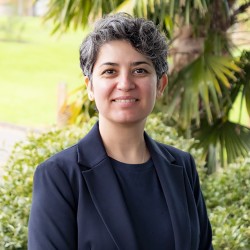
Dr Bahareh Heravi
Academic and research departments
Surrey Institute for People-Centred Artificial Intelligence (PAI), Faculty of Arts, Business and Social Sciences, Entrepreneurship and Innovation.About
Biography
Dr Bahareh Heravi is a Reader in AI and Media at the Surrey Institute for People-Centred AI and a globally leading expert in AI and Journalism. Her research is primarily focused on Data & Computational Journalism, data storytelling, responsible and inclusive AI, information design, and the use of AI in journalism and media. She is currently a BRAID Fellow with BBC R&D, working on Enhancing Responsible AI Literacy in Journalism.
Bahareh is a founding co-chair of the European Data & Computational Journalism Conference and a steering committee member of the Computation + Journalism Conference. She sits on the Irish Government's Open Data Governance Board, and serves on the EDI advisory board of the Royal Statistical Society. She also acts as an expert evaluator and project monitor for the European Commission and the Research Data Alliance, and is a Visiting Fellow at the Microsoft–UCD Centre for Digital Policy.
Before joining the University of Surrey in 2022, Bahareh was based at University College Dublin (UCD), where she served as the Postgraduate Director of the School of Information & Communication Studies. She was the founding director of the UCD Data Journalism Programme, a member of the Graduate School Board at the College of Social Sciences and Law, and a member of UCD's central Application Steering Group. Additionally, she sat on the Academic Oversight Committee of the UCD Professional Academy and was a member of the Race and Ethnic Equality working group at UCD EDI. She also served as a working group member for the Irish National Open Research Forum, contributing to national-level discussions on open research policy in Ireland.
Previous to that Bahareh was a Research Group Leader at the Insight Centre for Data Analytics at the National University of Ireland Galway, where she founded the Insight News Lab (a.k.a Digital Humanities and Journalism research group) and led a number of R&D projects in collaboration with industry partners such as RTÉ (Irish national TV and Radio Broadcaster). During 2014 and 2015, she worked as the Lead Data Scientist at the Irish Times and co-founded the Irish Times Data section.
Prior to her academic work, Bahareh worked over 10 years in the industry, designing, developing and managing Information Systems in various small, medium and large organisations in different sectors. She co-founded a successful software development company when she was 19 and sold her shares nearly 10 years later in 2010.
Dr Heravi was selected as one of Silicon Republic's Sci-Tech 100, and was named one of "22 high-flying scientists making the world a better place" in 2019.
News
Dr Heravi accepts PhD students in the areas of AI and Journalism, AI and Media, Digital Media Inclusion, Inclusive AI design, and Intersectional AI. [closed for 2025/2026 – she is not currently accepting new PhD students, except for candidates on our CDT programme].
Fully funded PhD studentship in Responsible AI Literacy in Journalism. [closed]
Areas of specialism
News
In the media
Supervision
Postgraduate research supervision
- Amarachi Ngwake, Thesis: Responsible AI Literacy in Journalism, 2025 -
- Karyn Fleeting, Thesis: Countering News Avoidance in Under-25s: Examining AI-Driven Strategies for Engagement and Relevance, 2024 -
- Simona Bisiani, Thesis: Reassessing Digital Local News Provision in the UK: Large-Scale Content Analyses to Uncover Causes and Effects of Spatial Inequalities in News Quality and Quantity, 2022 -
- Blessing Duke (part-time), Thesis: Digital Games as a Modality for Journalism: An Exploration of Narrative Journalism and Gaming Paradigms, 2019 -
- Timea Biro (part-time), Thesis: Organisational Science Communication for Research Data in the context of Open Science, 2018 -
Sustainable development goals
My research interests are related to the following:
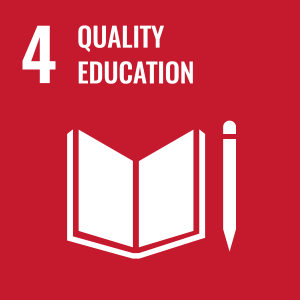
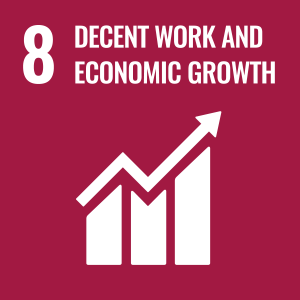

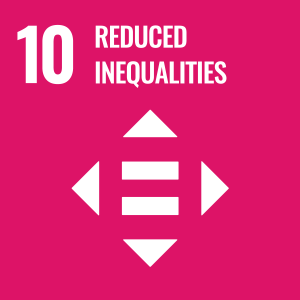
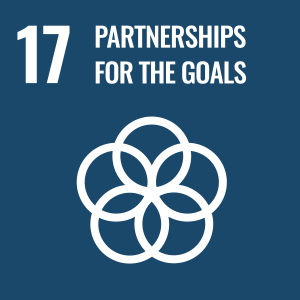
Publications
The event, marking the 10th edition of the Computation+Journalism Symposium (C+J) and the 4th edition of the European Data and Computational Journalism Conference (datajconf), was jointly hosted for the first time in Zurich. It was also a notable occasion as the C+J Symposium was held outside of the United States for the first time. The conference brought together professionals from industry, academia, and journalism to foster a multifaceted dialogue on information, data, social, and computer sciences. The objective was to propel research and practice in the extensive field of Data and Computational Journalism. This event served as a platform for journalists and researchers to interact, allowing news organizations to engage with computational and social scientists, and explore innovative practices that benefit the public. The first day of the conference, dedicated to workshops, took place at the Tamedia HQ (TX Group), in Zurich. A key focus of the conference's program was the impact of Artificial Intelligence in the media sector. The agenda included a diverse array of talks, discussions. Topics covered were the future of AI in news, deepfake ethics, natural language processing (NLP), algorithmic accountability, data journalism, newsroom automation, and many other issues. The conference provided a blend of academic presentations and keynotes from industry leaders, encapsulating a comprehensive perspective on the current and future trends in the realm of journalism and technology.
This response to the UK Government consultation on AI and Copyright was prepared by researchers in the Bridging Responsible AI Divides (BRAID) Programme. BRAID is a UK-wide programme dedicated to integrating Arts and Humanities research more fully into the Responsible AI ecosystem, as well as bridging the divides between academic, industry, policy and regulatory work on responsible AI (https://braiduk.org/).Views are our own - as researchers/academics - and do not reflect those of our institutions, the organisations partnered with us in our projects, the BRAID programme as a whole, or other BRAID researchers. Throughout this response there may be varying views from the responding researchers, and we have flagged these where relevant, as well as points where there has been explicit agreement. Researchers who have not contributed to a particular answer do not take a view on that specific point.
Reviewing the existing and long-established storytelling structures, this paper examines the use of the storytelling structures employed in data storytelling, specifically in the context of data journalism. For this, a large set of data stories from a variety of news outlets was collected, tagged and analysed. Accordingly, and reflecting on the results, the paper proposes a new storytelling structure for data storytelling, which addresses the unique requirements of this emerging area of study and practice, called the Water Tower structure. This proposed structure is an addition to the existing storytelling structures, and is specifically designed for and targeted at storytelling with data, with a particular focus on data journalism. While this paper is primarily focused on data storytelling in journalism, the contributions are believed to be of use and value to other domains such as Business.
This chapter reviews established storytelling structures and examines their application in data storytelling, with a particular focus on data journalism. Building on the findings, the chapter introduces the ‘Water Tower Structure’ as a novel storytelling structure for data storytelling. This proposed structure augments the existing array of storytelling models by offering a structure tailored specifically to the unique demands of data-driven storytelling. While this chapter and the Water Tower structure are primarily focused on data storytelling in journalism, data storytelling transcends journalism, finding utility in various fields such as communication and business. The proposed storytelling structure, therefore, is anticipated to have significant relevance beyond journalistic applications.
Local journalism is fundamental for a thriving democracy, yet the UK faces a decline in the number of print and digital local news outlets. Large-scale mappings of the surviving outlets offer invaluable insights to policymakers designing interventions to strengthen the sector. Due to the lack of a comprehensive national directory of UK print and digital local news outlets, researchers have resorted to datasets such as circulation auditors’ databases, which have been noted to be incomplete and outdated. A lack of understanding of the magnitude of these data limitations hinders researchers from selecting optimal datasets. This study evaluates four commonly used local news databases, uncovering significant variations in their currentness and comprehensiveness. Thereafter, statistical analyses demonstrate the significant effect of each dataset’s shortcomings on findings in local news research. To address this issue, triangulation and manual verification are employed to create a more comprehensive and robust dataset. This procedure generates a new national dataset of print and digital local news outlets that can be used in future research, alongside a framework for leveraging public data to build an independent research dataset. This work paves the way for more rigorous research in data-driven local news provision studies. Concluding remarks stress the importance of setting definitions and establishing clear data pipelines in an increasingly diversified and dynamic sector.
The future of journalism is more stable than we imagine. The search for innovative solutions always requires that we take a look back at the past, even if it is to address the opportunities and challenges posed by artificial intelligence in the realm of journalism. Computational algorithms are capable of streamlining such diverse tasks as content discovery, filtering, analysis, production, publishing or distribution, although the financial investment of implementation represents one of the main impediments and generates a visible divide in the present and future media system. Furthermore, the ethical dilemmas it incites will depend on the choices made by its creators, whose mixed profiles will be in high demand.
The cultural heritage sector has traditionally been concerned with sharing resources and furthering human knowledge, with particular interest to the issues associated with metadata and interoperability, especially when it comes to the use of technology. These goals and interests in the cultural heritage sector are natural alignments with those of linked data; hence. there has been an increasing interest in the application of linked data in this sector. This article studies the implementation of linked data in the cultural heritage sector, through a systematic literature review of case studies of linked data implementation projects in this sector. The results reflect on the parties involved, the level of collaboration, and the motivation behind these projects. The study suggests that universities and national institutions were the main players in implementing such technologies in the cultural heritage sector, suggesting that there may be some barriers preventing smaller GLAM institutions from implementing linked data projects. The results further suggest that many linked data projects in this sector were primarily exploratory projects, and often performed in a collaborative manner. They further indicate that the most common motivating factors behind these projects were research needs, a desire to contribute to linked data as a movement, and other specific user needs. Reflecting on this systematic literature review, this article makes a set of recommendations for future work to increase the use of linked data in the cultural heritage sector and to remove barriers to adoption.
This study introduces a synthesised framework for the analysis of data visualisations in the news. Through a close examination of seminal content analyses, their methodologies and findings, this article proposes a framework that consolidates dimensional components of data visualisations previously scattered across this body of research. To transition from incidental and essentialist examinations of visual data artefacts towards a systematic and theory-informed exploration, we consider the diagrammatic dimensions of data visualisations. The offered synthesized framework can serve as a starting point for both theory-infused descriptive purposes as well as more theory-guided explorations. The framework is put to the test by analysing 185 visualisations drawn from award-winning data stories. Findings generated through the application of the framework highlight the varied composition of components of data visualisations, though certain combinations of components are prevalent, leading to static categorical comparisons or interactive spatial localization. After all, data artefacts can be understood as problem-posing elements that are the outcome of diagrammatic thinking that journalists employ to communicate claims.
News organisations have longstanding practices for archiving and preserving their content. The emerging practice of data journalism has led to the creation of complex new outputs, including dynamic data visualisations that rely on distributed digital infrastructures. Traditional news archiving does not yet have systems in place for preserving these outputs, which means that we risk losing this crucial part of reporting and news history. Following a systematic approach to studying the literature in this area, this paper provides a set of recommendations to address lacunae in the literature. This paper contributes to the field by (1) providing a systematic study of the literature in the fields, (2) providing a set of recommendations for the adoption of long-term preservation of dynamic data visualisations as part of the news publication workflow, and (3) identifying concrete actions that data journalists can take immediately to ensure that these visualisations are not lost.
Despite the growing interest in data journalism in newsrooms and its more recent emergence as an academic discipline, there is a need for systematic research on the state-of-the-art and current data journalism-related practices in newsrooms. The Global Data Journalism survey was an attempt to address this gap by studying the data journalism practices in newsrooms across the world. This study provides a descriptive view of the results of this study and discusses the findings on several aspects of data journalism practice, characteristics of data journalists and data teams, and their skills and educational requirements. We further provide insight into the values associated with journalistic work and analyse the ways in which the community believes data journalism has improved or undermined these values.
This paper studies how the field of librarianship can help counteract the phenomenon of fake news and misinformation. A literature review was conducted to identify the current themes, patterns, correlations and gaps within the existing literature on fake news, information literacy and librarianship. Findings centre on defining fake news, analysing contemporary and emerging information literacy frameworks, and outlining the current efforts and initiatives exercised by libraries to refute the spread of fake news and educate communities on how to navigate through an era of untruth and disinformation. The paper outlines effective initiatives developed by those within the Library and Information Systems (LIS) profession while highlighting considerations and recommendations as to how librarians can continue to enhance their role in the digital age and make successful contributions to the professional field.
As the emphasis of data journalism research shifts to the Global South one region that remains relatively under researched is Ibero-America. Arguably, a space that has pioneered data journalism practices and with enormous potential for social change and development through open data, Ibero-America has excelled in many areas related to the field: La Nacion in Argentina has to date one of the most innovative data journalism units globally. Also, La Nacion, together with the Spanish newspaper El Pais, were, together with the Guardian, the New York Times and the Spiegel, the first news organisation that extracted and published information from WikiLeaks' War Logs. Finally, Spain is one of the most open societies in Europe, and a global example for open data. Yet, an absence of Ibero-American data journalism studies from mainstream scholarship, creates an opportunity to further explore the developments and evolution of data journalism in this geographic region. In this vein, this special edition of Icono14 aims at repositioning Iberian American data journalism within the broadest discussions on the field, recontextualising its contribution into debates on the role of this journalistic practice in the Global South.
Additional publications
Surrey Institute for People-Centred AI (2024), AI and Elections: Are We Ready to Save Democracy?
Simona BIsiani, Bahareh Heravi (2023), Uncovering the State of Local News Databases in the UK: Limitations and Impacts on Research, In: Journalism & Media 4(4)


